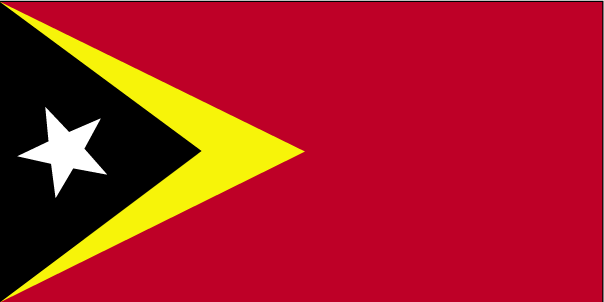For a more detailed listing
click hereTimor was actively involved in Southeast Asian trading networks for centuries and by the 14th century exported aromatic sandalwood, slaves, honey, and wax. A number of local chiefdoms ruled the island in the early 16th century when Portuguese traders arrived, chiefly attracted by the relative abundance of sandalwood on Timor; by mid century, the Portuguese had colonized the island. Skirmishing with the Dutch in the region eventually resulted in an 1859 treaty in which Portugal ceded the western portion of the island. Imperial Japan occupied Portuguese Timor from 1942 to 1945, but Portugal resumed colonial authority after the Japanese defeat in World War II. East Timor declared itself independent from Portugal on 28 November 1975 and was invaded and occupied by Indonesian forces nine days later. It was incorporated into Indonesia in July 1976 as the province of Timor Timur (East Timor). An unsuccessful campaign of pacification followed over the next two decades, during which an estimated 100,000 to 250,000 people died. In an August 1999 UN-supervised popular referendum, an overwhelming majority of the people of Timor-Leste voted for independence from Indonesia. However, in the next three weeks, anti-independence Timorese militias - organized and supported by the Indonesian military - commenced a large-scale, scorched-earth campaign of retribution. The militias killed approximately 1,400 Timorese and forced 300,000 people into western Timor as refugees. Most of the country’s infrastructure, including homes, irrigation systems, water supply systems, and schools, and nearly all of the country’s electrical grid were destroyed. On 20 September 1999, Australian-led peacekeeping troops deployed to the country and brought the violence to an end. On 20 May 2002, Timor-Leste was internationally recognized as an independent state. In 2006, internal tensions threatened the new nation’s security when a military strike led to violence and a breakdown of law and order. At Dili’s request, an Australian-led International Stabilization Force (ISF) deployed to Timor-Leste, and the UN Security Council established the UN Integrated Mission in Timor-Leste (UNMIT), which included an authorized police presence of over 1,600 personnel. The ISF and UNMIT restored stability, allowing for presidential and parliamentary elections in 2007 in a largely peaceful atmosphere. In February 2008, a rebel group staged an unsuccessful attack against the president and prime minister. The ringleader was killed in the attack, and most of the rebels surrendered in April 2008. Since the attack, the government has enjoyed one of its longest periods of post-independence stability, including successful 2012 elections for both the parliament and president and a successful transition of power in February 2015. In late 2012, the UN Security Council ended its peacekeeping mission in Timor-Leste and both the ISF and UNMIT departed the country. Early parliamentary elections in the spring of 2017 finally produced a majority government after months of impasse. Currently, the government is a coalition of three parties and the president is a member of the opposition party. In 2018 and 2019, this configuration stymied nominations for key ministerial positions and slowed progress on certain policy issues.
Source:
World Factbook 2020

| This product was added to our catalog on Tuesday 27 October, 2020.